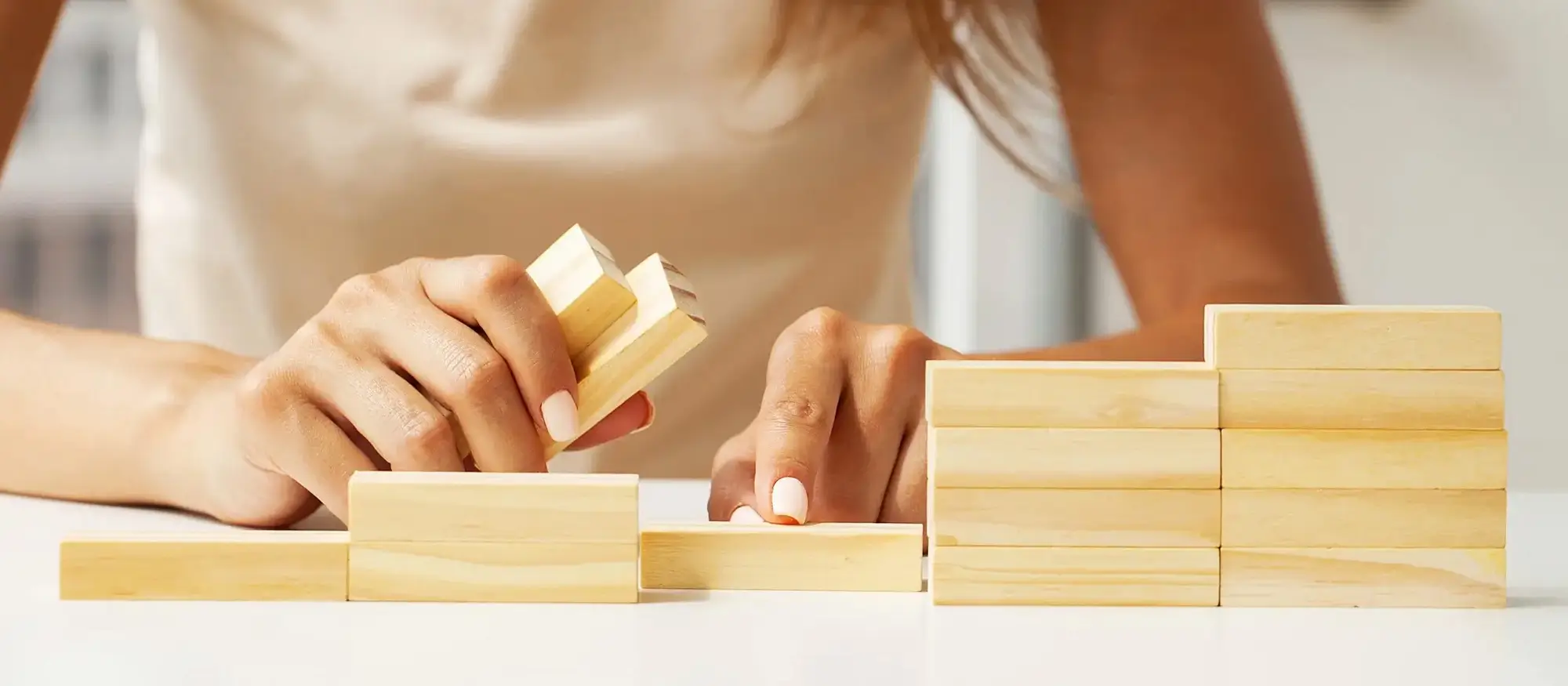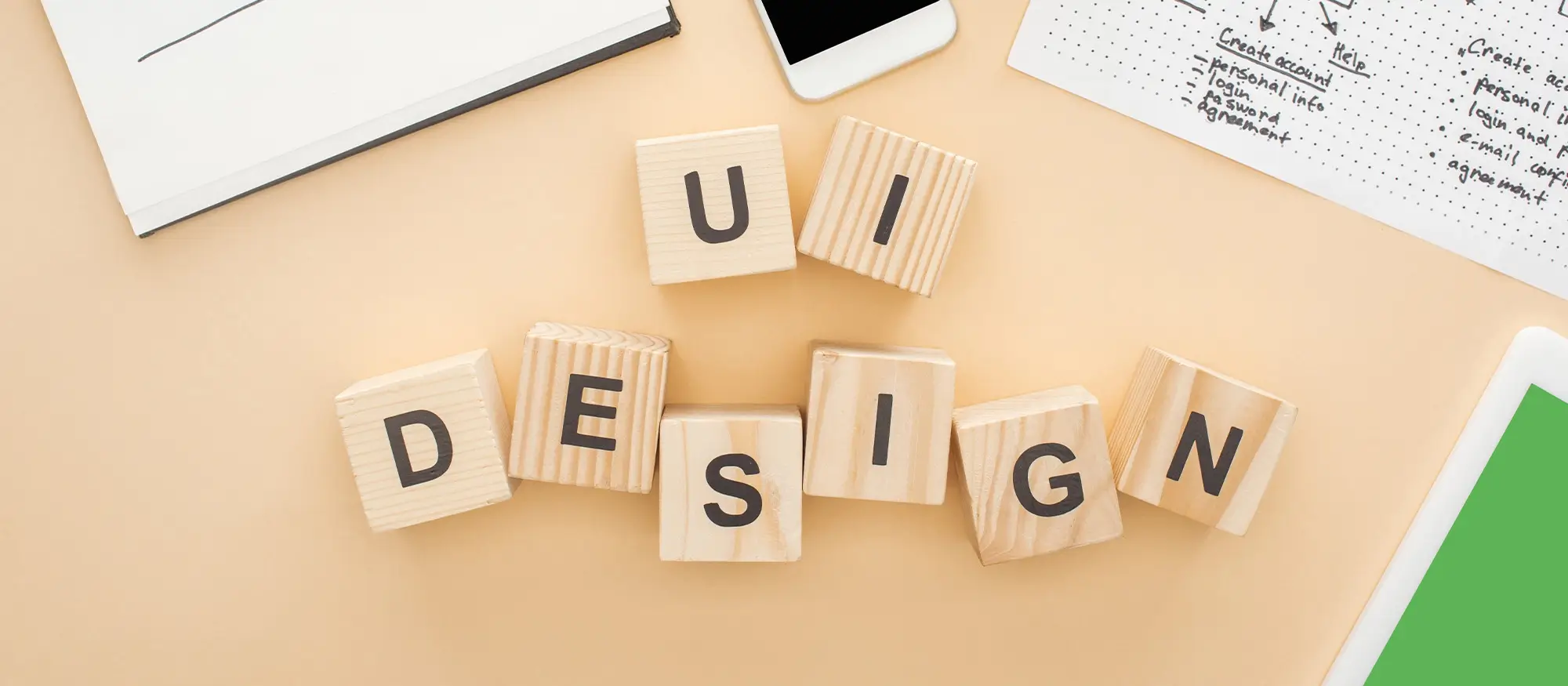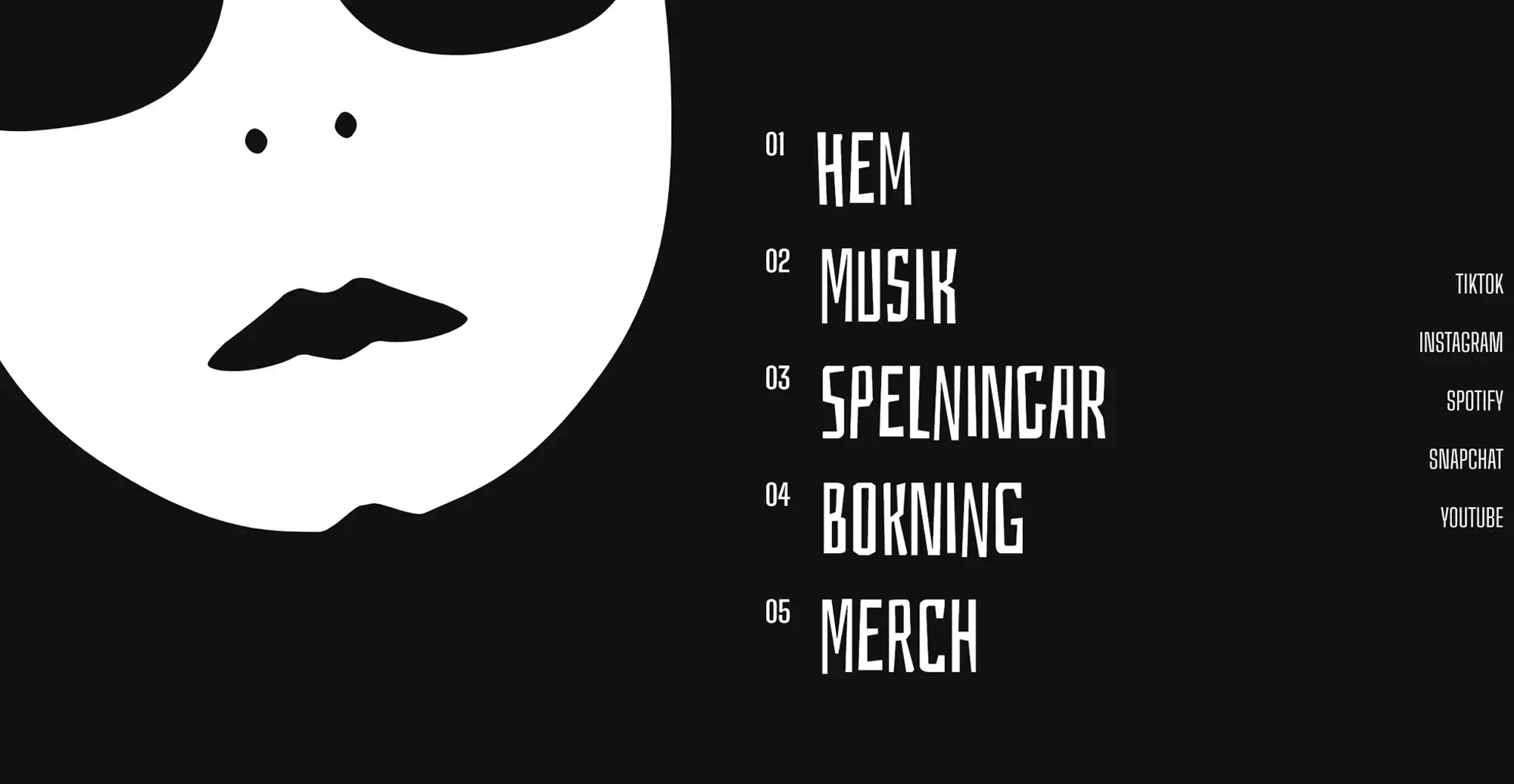What is a WordPress blocks template?
Try MaxiBlocks for free with 500+ library assets including basic templates. No account required. Free WordPress page builder, theme and updates included.

A WordPress blocks template is a pre-designed layout in the block editor that helps you build pages or posts more quickly. It includes a mix of blocks like text, headings and images, arranged in a ready-to-use structure. This saves time and removes the need to design each element from scratch.
Updated 15th May 2025
Understanding WordPress block templates
Block templates in WordPress make it easier to design beautiful pages without starting from a blank canvas. Each template combines several blocks and patterns into a layout you can use as-is or adapt to your needs. Whether you are building a landing page, blog, or portfolio, templates help create a cohesive design that saves time and improves consistency.
How templates fit into WordPress
Every piece of content you build in WordPress begins with blocks. These are the fundamental elements such as text, images or buttons. When you group multiple blocks into a reusable design, you create a block pattern. A layout describes how those blocks and patterns are arranged on the page. A template brings these all together as a complete structure for posts or pages.
Templates give you the freedom to apply a consistent look and feel across your site while reducing design effort. They are especially useful when paired with tools like MaxiBlocks, which gives you access to hundreds of pre-built patterns and layouts inside the Gutenberg editor.
What is a starter site?
A starter site is a ready-made website setup that includes templates, patterns and page layouts tailored for a specific purpose. For example, a portfolio starter site might include templates for case studies, testimonials, and a contact page. With MaxiBlocks Go, you can import full starter sites directly into your WordPress theme and start editing content immediately.
Using templates and starter sites streamlines the design process, allowing you to focus more on your message and less on layout decisions. Combined with the flexibility of MaxiBlocks, they make it easier to build a site that’s both attractive and functional.

Understanding the parts of a WordPress template
In modern WordPress block themes, templates are made of modular pieces called template parts. These reusable sections define consistent elements such as headers and footers, helping maintain visual and structural uniformity across your website. They also make editing and site-wide updates more efficient. Each template part plays a distinct role in both design and user experience.
Common template parts and how they work
A header appears at the top of every page. It typically holds your logo, site title, navigation links and sometimes a search function. This section is essential for branding and quick access to key areas of your site.
The footer is found at the bottom of each page. It may include legal links, contact information, social icons or newsletter sign-ups. Its role is to offer final navigation cues and wrap up the page neatly.
A sidebar, while optional, often appears on blog posts or archive pages. It contains widgets like categories, recent posts or a search bar. This area enhances the browsing experience and can be configured differently depending on the template.
The post template part controls how individual blog entries or articles appear. It standardises the layout for titles, content, author details and more, ensuring all posts share the same look.
The page template works similarly but is meant for static content such as About or Contact pages. These do not show meta data like publish date or author by default and are styled to suit more permanent content.
An archive layout is used to display multiple posts grouped by category, tag, date or author. This is useful for content-heavy sites such as blogs, directories or portfolios.
The single post template gives more control over how individual posts are structured and styled, including space for a bio, related posts and threaded comments.
The comments section displays user interactions. It contains the comment form and all approved entries, allowing visitors to participate in discussions.
A search results layout presents relevant content based on a user’s search query. It usually includes the result title, snippet and sometimes a featured image.
Lastly, the 404 template appears when a visitor tries to reach a non-existent page. A helpful message and suggestions or a search box should be included to guide users back to working content.
Why template parts matter
Template parts allow for flexible, component-based design. You can reuse them across multiple templates, update them in one place and maintain a consistent look throughout your site. This modular approach fits seamlessly with Full Site Editing and helps non-developers build professional-looking websites.
Subscribe to our newsletter
Blocks templates in WordPress and how MaxiBlocks simplifies the process
Using blocks templates in WordPress allows you to build cohesive pages quickly by applying pre-designed layouts made from multiple blocks. These templates save time, improve design consistency, and reduce the need for manual formatting. When creating a new post or page, you can select a template directly from the block editor to apply a complete structure in just a few clicks.
How WordPress applies blocks templates
WordPress uses a template hierarchy to decide which template fits a page or post. It begins with the most specific layout, such as one created for a single post or custom content type. If that is not available, it moves through a defined order to find the most appropriate match. Understanding this logic helps when extending a theme with new designs or overriding existing ones.
Extending template designs with block patterns
Many modern themes come with basic templates. However, you can enhance these with additional layouts, reusable blocks and customised sections. MaxiBlocks offers a full library of high-quality patterns and styles to extend your current theme. These elements work seamlessly within the WordPress block editor and support full site editing.
Why MaxiBlocks stands out
MaxiBlocks is more than just a collection of WordPress blocks. It’s a complete design solution built for efficiency and creative flexibility. You gain access to professionally designed templates, each optimised for speed, accessibility and mobile responsiveness. These templates cover a wide range of use cases, including landing pages, service sections, testimonials, blog layouts and more.
When paired with the MaxiBlocks plugin and MaxiBlocks Go theme, users can edit any part of their site, customise global styles and use drag-and-drop design tools to create visually compelling pages without code.
Whether you’re building a blog or an advanced business site, MaxiBlocks gives you a reliable foundation and the tools to craft a polished and professional result.

Why WordPress block themes elevate your site
WordPress block themes offer a powerful way to design, customise and manage a website with ease. They combine visual editing, modern efficiency and flexibility to streamline both content creation and design. These themes are especially useful for users who want to take full control of their layout without writing code.
Visual design with real-time feedback
One of the biggest advantages of block themes is the ability to see changes as you make them. This live preview approach helps you build confidence in your design decisions. Whether you are adjusting text, spacing or layout, the changes appear instantly on your screen. This removes guesswork and speeds up the editing process.
Accessibility and ease of use
Block themes are designed to be approachable for beginners while still offering the depth advanced users need. You can arrange elements with a simple drag-and-drop interface and customise each section of your site visually. This accessibility opens the door to everyone, regardless of design or development background.
Speed and performance built in
Because block themes are built with modern WordPress standards in mind, they often feature cleaner code. This leads to improved performance, faster load times and better optimisation for mobile devices. A faster site also performs better in search rankings, offering a strong SEO advantage.
Advanced customisation without code
With block themes, you can customise fonts, colours and spacing directly in the editor. You can also adjust global styles through theme tools or add your own design flourishes using style panels. For example, with tools like MaxiBlocks, you can apply a style card across your entire site to ensure consistent branding.
Less reliance on plugins
A key benefit of using a feature-rich block theme is the reduced need for third-party plugins. Many functions, from call-to-action sections to testimonials, are available as built-in blocks. This reduces maintenance, improves site security and helps pages load more efficiently.
Built-in accessibility and responsive design
Modern block themes prioritise accessibility and mobile responsiveness. Fonts, contrast, keyboard navigation and screen reader compatibility are all considered in the design process. This ensures your site works well for all users across devices.
Build like a pro
Future-proof your website with WordPress block themes
Keeping your website current is essential for both performance and long-term success. WordPress block themes are built to evolve with the platform, making them a reliable foundation for the future. Their structure supports the latest design standards, integrates seamlessly with new WordPress features, and allows for continual improvements without major overhauls.
Built for longevity and adaptability
Block themes use the latest WordPress technologies, including full site editing and theme.json configuration. This gives you greater control over styling and layout, all while reducing the need for heavy custom code. As WordPress updates and improves, block themes are updated alongside it, helping your site stay compatible and efficient.
Evolving without disruption
With tools like MaxiBlocks and the MaxiBlocks Go theme, updating your website’s layout or branding is simple. You can apply new global styles or refresh individual blocks without affecting the entire site. That means you stay relevant without rebuilding from scratch.
A future-proof site adapts, performs well, and continues to serve your audience as trends and technologies shift. If you’re ready to invest in a forward-looking website, start with a modern block theme and pair it with MaxiBlocks to ensure your site is ready for whatever comes next.

Final thoughts on WordPress block templates
WordPress block templates are one of the most powerful tools in modern site building. They bring structure, consistency and flexibility to your design process while making complex layouts easy to manage. Whether you’re a beginner or a developer, templates streamline the experience and save time without sacrificing control.
Key takeaways
What: Block templates are pre-built page structures made of blocks and patterns, used to design consistent layouts across posts and pages.
Why: They simplify the creation process, reduce repetitive work, and ensure a cohesive user experience and visual style.
How: You apply them directly from the WordPress editor or theme, then customise them with your own content and style settings. Tools like MaxiBlocks enhance this by offering a wide range of professionally designed templates.
When: Use block templates when you need to maintain brand consistency, speed up design workflows, or build multiple pages with a unified structure.
Future: Block templates are the foundation of WordPress’ full site editing future. As the ecosystem evolves, their role will only grow bringing even more flexibility, performance, and creative control to the way we build on the web.
WordPress blocks for layout design and customization
Learn how to use WordPress blocks to create stylish, responsive sections without code.
FAQs – WordPress blocks template
What is a WordPress blocks template?
A WordPress blocks template is a predefined layout made up of one or more content blocks that can be inserted into pages or posts using the block editor. These templates help you quickly build structured, visually consistent content without starting from scratch.
How do block templates differ from individual blocks?
While a single block represents a specific piece of content, such as a heading or image, a block template combines multiple blocks to form a complete layout. For example, a contact section template might include a heading, a paragraph, and a form block grouped together.
Where can you find blocks templates in WordPress?
You can find block templates in the block editor by clicking the plus icon and opening the Patterns tab. These templates are often referred to as block patterns. Some themes and plugins also include their own templates to match their design style.
Can I create my own blocks template?
Yes, you can build a layout using blocks and save it as a reusable block or template part. With Full Site Editing, you can also create page and section templates directly from the Site Editor for reuse throughout your website.
Are blocks templates responsive?
Yes, most WordPress block templates are designed to be fully responsive. This means they adjust automatically to fit different screen sizes and devices without requiring extra setup.
Do I need a special theme to use blocks templates?
You don’t need a special theme, but block-based themes provide the best compatibility. These themes are built to support Full Site Editing and often include their own library of blocks templates and patterns.
What are template parts in WordPress?
Template parts are sections of a site layout, such as headers or footers, created using blocks. They can be reused across different templates to maintain consistency and simplify updates.
How do blocks templates help with site design?
Blocks templates speed up the design process by giving you a ready-made structure. They reduce the need for repetitive design work, ensure layout consistency and help you focus on content instead of layout.
Can plugins add more blocks templates?
Yes, many plugins such as Spectra, Stackable, Kadence Blocks and MaxiBlocks offer additional blocks templates. These expand your design options with pre-styled sections for hero areas, testimonials, pricing tables and more.
Is it possible to edit a block template after inserting it?
Yes, once you insert a blocks template into a page or post, you can fully edit the content and layout. The blocks behave like any other blocks in the editor, giving you full control over styling and structure.
WordPress itself
Official Website
wordpress.org – This is the official website for WordPress, where you can download the software, find documentation, and learn more about using it.
WordPress Codex
codex.wordpress.org/Main_Page – This is a comprehensive documentation resource for WordPress, covering everything from installation and configuration to specific functionality and troubleshooting.
WordPress Theme Directory
wordpress.org/themes – The official WordPress theme directory is a great place to find free and premium WordPress themes. You can browse themes by category, feature, and popularity.
maxiblocks.com/go/help-desk
maxiblocks.com/pro-library
www.youtube.com/@maxiblocks
twitter.com/maxiblocks
linkedin.com/company/maxi-blocks
github.com/orgs/maxi-blocks
wordpress.org/plugins/maxi-blocks

Kyra Pieterse
Author
Kyra is the co-founder and creative lead of MaxiBlocks, an open-source page builder for WordPress Gutenberg.
You may also like

